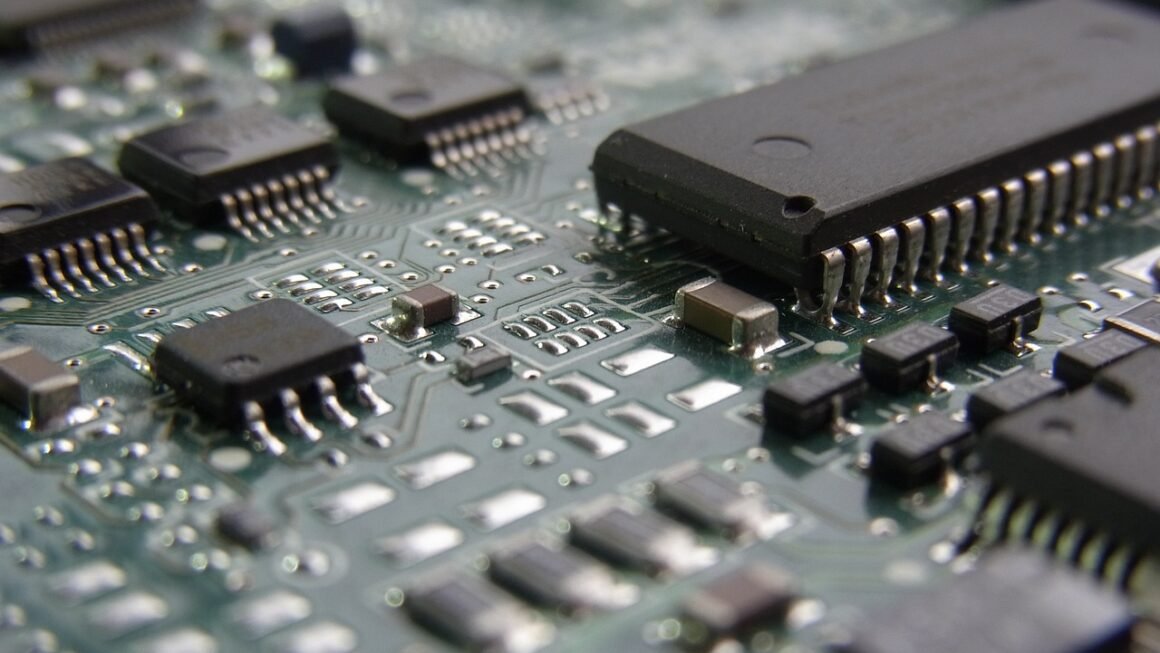Imagine stepping into a world where the boundaries of reality blur, where you can explore ancient ruins from your living room or collaborate with colleagues on a virtual project as if you were in the same physical space. This isn’t science fiction; it’s the power of Augmented Reality (AR) and Virtual Reality (VR), technologies transforming how we learn, work, and interact with the world around us. This blog post will delve into the intricacies of AR and VR, exploring their applications, benefits, and potential impact on various industries.
Understanding Augmented Reality (AR)
Augmented Reality enhances our real-world perception by overlaying digital information onto it. Unlike VR, which creates a completely immersive virtual environment, AR supplements the real world with computer-generated images, sounds, and other sensory input.
How AR Works
AR systems typically use cameras and sensors to identify the environment and track the user’s position. Software then generates digital content that is overlaid onto the user’s view. There are several key components involved:
- Tracking: Accurately determining the user’s location and orientation in the real world. This often involves using sensors like GPS, accelerometers, and cameras.
- Image Recognition: Identifying objects or markers in the environment to anchor digital content.
- Projection: Displaying the augmented content onto the user’s view, either through a smartphone screen, tablet, or specialized AR glasses.
Examples of AR in Action
AR is already widely used across various industries. Here are a few prominent examples:
- Gaming: Pokémon GO popularized AR gaming, allowing users to catch virtual Pokémon in real-world locations.
- Retail: IKEA Place allows customers to virtually place furniture in their homes using their smartphones, providing a realistic preview of how it will look.
- Education: AR apps can bring textbooks to life, allowing students to interact with 3D models of historical artifacts or scientific concepts.
- Manufacturing: AR can guide workers through complex assembly processes, providing step-by-step instructions and visual aids.
- Healthcare: Surgeons can use AR to overlay medical imaging data onto a patient during surgery, improving precision and accuracy.
Benefits of Augmented Reality
- Enhanced User Experience: AR makes interactions more engaging and informative, leading to a better user experience.
- Improved Training and Education: AR provides hands-on learning experiences that are more effective than traditional methods.
- Increased Efficiency: AR can streamline workflows and improve productivity in various industries.
- Better Decision-Making: AR provides real-time data and insights that help users make better decisions.
- Cost Savings: AR can reduce training costs, improve maintenance efficiency, and optimize resource utilization.
Exploring Virtual Reality (VR)
Virtual Reality creates a completely immersive, computer-generated environment that users can interact with. VR headsets block out the real world and replace it with a simulated reality, allowing users to feel like they are actually present in a different place.
How VR Works
VR systems use headsets with built-in displays and sensors to track the user’s head movements and translate them into the virtual world. Key components include:
- Head-Mounted Display (HMD): The primary interface for experiencing VR, providing a stereoscopic display that creates a sense of depth.
- Tracking Sensors: Tracking the user’s head movements and position in the virtual environment.
- Controllers: Allowing users to interact with objects and navigate the virtual world.
- Spatial Audio: Providing realistic sound effects that enhance the sense of immersion.
Examples of VR Applications
VR is finding applications in a wide range of fields:
- Gaming: VR gaming offers a deeply immersive experience, allowing players to step into the game world and interact with it directly.
- Training and Simulation: VR is used to train professionals in high-risk environments, such as pilots, surgeons, and soldiers.
- Real Estate: VR tours allow potential buyers to virtually walk through properties from anywhere in the world.
- Healthcare: VR is used for pain management, physical therapy, and mental health treatment.
- Entertainment: VR experiences offer immersive storytelling and interactive entertainment, such as virtual concerts and theme park rides.
Benefits of Virtual Reality
- Immersive Experiences: VR provides a powerful sense of presence, allowing users to feel fully immersed in the virtual world.
- Safe Training Environment: VR allows users to practice skills and procedures in a safe and controlled environment without real-world consequences.
- Enhanced Learning: VR provides hands-on learning experiences that are more engaging and memorable than traditional methods.
- Improved Communication and Collaboration: VR enables remote teams to collaborate in a shared virtual space, improving communication and teamwork.
- Therapeutic Applications: VR can be used to treat phobias, anxiety, and other mental health conditions.
Comparing AR and VR: Key Differences
While both AR and VR are immersive technologies, they differ in several key aspects:
- Level of Immersion: VR creates a completely immersive experience that replaces the real world, while AR enhances the real world with digital overlays.
- Hardware Requirements: VR typically requires a dedicated headset and powerful computer, while AR can be experienced on smartphones and tablets.
- Applications: VR is primarily used for gaming, training, and entertainment, while AR has a wider range of applications in retail, education, and manufacturing.
- Interaction: VR allows users to interact with a completely virtual environment, while AR allows users to interact with the real world augmented with digital content.
Here’s a table summarizing the key differences:
| Feature | Augmented Reality (AR) | Virtual Reality (VR) |
|—————-|————————–|————————|
| Immersion Level | Partially Immersive | Fully Immersive |
| Hardware | Smartphones, Tablets, AR Glasses | VR Headsets, Powerful PCs |
| Main Focus | Enhancing Reality | Creating a New Reality|
| Interaction | Real World + Digital | Entirely Virtual |
| Use Cases | Retail, Education, Manufacturing | Gaming, Training, Entertainment |
The Future of AR/VR: Trends and Predictions
The AR/VR market is rapidly evolving, with new technologies and applications emerging constantly. Here are some key trends and predictions for the future of AR/VR:
Advancements in Hardware and Software
- Improved Displays: Higher resolution displays and wider fields of view will enhance the realism and immersion of AR/VR experiences.
- More Powerful Processors: More powerful processors will enable more complex and realistic simulations.
- Advanced Tracking Technologies: More accurate and reliable tracking technologies will improve the user experience and reduce motion sickness.
- Cloud-Based AR/VR: Cloud-based AR/VR platforms will enable more scalable and accessible experiences.
Growing Adoption Across Industries
- Healthcare: AR/VR will be used for more advanced surgical training, pain management, and mental health treatment.
- Education: AR/VR will transform the way students learn, providing more engaging and interactive experiences.
- Manufacturing: AR/VR will be used to streamline assembly processes, improve quality control, and reduce downtime.
- Retail: AR/VR will enhance the shopping experience, allowing customers to virtually try on clothes, visualize furniture in their homes, and explore products in 3D.
Social AR/VR
- Virtual Social Spaces: AR/VR will enable users to connect and interact with each other in shared virtual spaces.
- Collaborative Work Environments: AR/VR will transform the way remote teams collaborate, providing a more immersive and productive work environment.
- Live Events and Entertainment: AR/VR will offer new ways to experience live events and entertainment, such as virtual concerts and sporting events.
Conclusion
Augmented Reality and Virtual Reality are revolutionary technologies with the potential to transform the way we live, work, and interact with the world. From enhancing our gaming experiences to revolutionizing training and education, AR and VR are already making a significant impact across various industries. As hardware and software continue to improve, and adoption rates increase, we can expect to see even more innovative and transformative applications of AR and VR in the years to come. Stay tuned to witness the evolution of these powerful technologies and their profound impact on our future.



